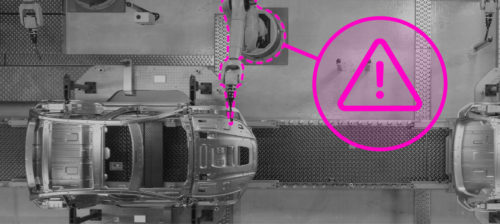Tips & Tricks
The collision of the creative and practical parts of the brain gives us the world's great inventions.
The collision of the creative and practical parts of the brain gives us the world’s great inventions. The basic tools man has invented — the lever, the wheel, the pulley — haven’t been improved on centuries later, but the way those tools are adapted continue to evolve. Electricity is a force of nature and physics, but the taming of that force allows it to move mountains and still remain safe to use.
This is how Tips & Tricks was born more than 20 years ago — by facing the problems we see each day on the plant floor and crafting a creative solution. Hundreds of great ideas over more than two decades have helped Plant Engineering readers out of tight spots and helped get the job done safely and efficiently.
Even in today’s high-tech world, the basics of tools and nature haven’t changed. How we use them has changed dramatically. But there always will be room in a high-tech world for innovative ways to move motors, measure voltage or simply fill in a hole. Here are the 2008 contributions from PLANT ENGINEERING readers to the legacy of Tips & Tricks:
Identifying bad sensors
We have numerous automated machines on site and often cylinder piston position sensors go bad or out of adjustment. It is hard to tell which sensor is out of adjustment if several are daisy-chained to one PLC input. A trick I have found is to use a little pocket “pencil” magnet. When placed next to the sensor that is out of position, the string light’s up to indicate the sensor that needs adjusting — great time saver.
Peter Palmer
Facility engineer
Endura Products
Greensboro, NC
Fixed tool head near flywheel
In our press shop we have a blanking line where we cut coils into blanks of the appropriate size. The press has a 1.8 meter diameter flywheel. A brake on the outer surface of the flywheel stops the machine. Because of the continuous braking operation, line marks are generated on the outer surface of the fly wheel, which result in poor braking action and affect the life of new brake lining. In the past the flywheel was sent out for machining of its outer surface to remove these marks. However, the total time to accomplish this was 26 hours. To reduce the machining time, we installed a cutting tool head near the flywheel in the press, which enables us to machine the flywheel in 45 minutes.
V.K.Arora
India
Turning items on the conveyor
Material handlers experience an ergonomic issue when cartons are in an undesirable orientation on a continuous motion conveyor. This causes them to bend their wrists every time they remove a carton from the conveyor.
Since the conveyor belt is continuously in motion, you can install a stationary object that contacts the corner of the carton, causing it to turn 90 degrees. If you want the carton to turn a full 180 degrees, install a second stationary object downstream from the first one, which will cause the carton to complete the turn.
Fred R. Hoefer
PM/Project Team Leader
CIBA Vision Corporation
Duluth, GA
Sand as an emergency ballast
In a recent wind event, we had a large portion of our fully adhered EPDM roof system de-laminate. Luckily it did not come completely off. It was held on by the various roof curbs and penetrations, but was billowing 3 to 6 feet in the air.
To reduce the chance of complete failure while negotiations were made with the manufacturer and insurance carrier, 40-pound bags of play sand were used as emergency ballasts. This worked for more than one year, and the roofing contractor removed them during installation.
Thomas Lawson
Facilities Project Engineer
Nissan North America Inc.
Decherd, TN
Run pumps at slower speed
Many companies have processes that require pumps to supply fluids. In many cases, these fluids are throttled back by a gate or ball valves to get the volume needed for their process. The motor is still running at full speed using more electrical power than necessary.
The best way to approach this problem is to install variable frequency drives to run the motors. The drives can be adjusted to the speed needed to pump the right amount of fluid leaving the valves wide open. In most cases, this approach will save you at least 30% in electricity.
Dave White
Maintenance Manager
Titan Wheel Corp. of IL
Quincy, IL
Rusted nuts, socket wrenches
What do you do when a nut has so much rust on it that you can’t get a socket to fit on it? When using an adjustable wrench, often the bolt is so tight that the wrench will slip off the nut. Twelve-point sockets might fit on the nut with the assistance of a hammer, but many times the nut is rusted to the bolt so badly that the socket rounds off the corners before the nut starts to turn. Another method is to put a six-point metric socket on an SAE nut. In most cases, the metric equivalent is a few thousands of an inch larger, providing just enough room for the rust, but snug enough to provide a firm fit on the nut.
Frank Anderer, CPE
Facilities Engineer
Navistar Inc.
There’s more than one way…
My favorite trick is used when trying to disassemble rust-siezed bolts. After heat-expanding the nut with a torch, lay a wax candle or crayon onto the threads of the bolt. At the elevated temperature, the wax melts and flows like penetrating oil, lubricating the threads. It is still necesssary to loosen the bolts while the nut is hot and expanded, but the odds of it coming apart without twisting off the bolt or galling the flats of the nut are greatly improved over using just the heat/expansion technique.
Ed Rauch
Melting and Recycling Technology Leader
Molten Metal Process Group
Oswego, New York
PLC troubleshootingby adding counters
When troubleshooting on a machine with a PLC, add counters to catch fast transitioning inputs or bits. A possible use would be if you have a fault condition that is triggering, but the fault has multiple possible causes, and the cause happens too fast to catch by watching on a PC or operator interface. Just add a temporary counter in the program for each of the possible causes. The next time it trips, just look to see which counter has incremented. Some PLC programming packages have built in “plotters” or graphs to do this sort of monitoring, but they will not always catch a transition that lasts only one or two PLC scans. A counter in the PLC program will count a transition that lasts just one scan.
Jeff Schindler
Senior Controls Engineer
Production Control Units Inc .
Dayton, OH
Fatigue failure in bolted joints
Fatigue failures can be particularly hazardous because they often occur with no visible warning signs and the failure is often sudden and total. While most maintenance technicians understand how to torque fasteners properly, very few understand the reason why it is so critical to torque properly in applications subject to fatigue. Some simple rules to help avoid fatigue failures include:
Always replace all fasteners in a joint set when one fastener has failed
Never re-use fasteners where the service manual specifies new fasteners when re-assembled
Never use fasteners with any evidence of damage such as nicks or bad threads
Learn to “read” any failed fastener and recognize the signs of a possible fatigue failure
Get engineering support to analyse the loads when a fatigue situation is suspected; especially where danger to people, environment, or property is a possibility
Don’t substitute a different grade or type of fastener without review; you may set the stage for another, more serious failure
Don’t substitute a standard grade washer where a hardened washer is specified, and never use lock washers in a joint subject to cycling loads
Don’t substitute gasket material types (especially non-metallic for metallic types) without a design review.
If you suspect fatigue, a rule of thumb is to calculate the number of cycles a ferrous metal part has been exposed to before it failed. For failures at less than 10,000,000 cycles, suspect fatigue. With failures at more than 100,000,000 cycles, fatigue is not likely. It takes a 3,600 rpm motor only 46 hours to produce 10,000,000 cycles. A 75 rpm mixer shaft coupling bolt failing after 2
Sam McNair, CMRP
Life Cycle Engineering
Charleston, SC
Do you have experience and expertise with the topics mentioned in this content? You should consider contributing to our CFE Media editorial team and getting the recognition you and your company deserve. Click here to start this process.





